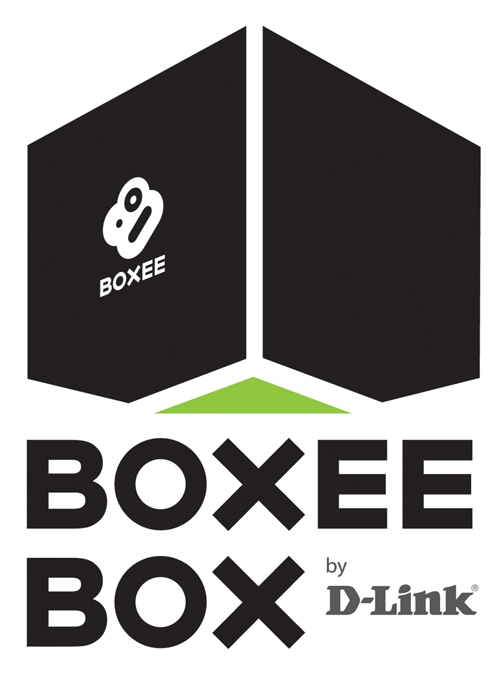Boxee Box: The Inside Story, Swapping Tegra 2 for Intel CE4100
by Ganesh T S & Brian Klug on September 13, 2010 10:31 AM EST- Posted in
- Media Streamer
- Home Theater
- HTPC
Most media streaming enthusiasts are aware of Boxee, the XBMC fork which has gained a huge following for its 10-foot user interface combined with social networking features. It is available for multiple platforms based on the x86 architecture, but the core business model has always remained a mystery. Some of the components of Boxee are proprietary, and Boxee has always shown keen enthusiasm in licensing the software to third party hardware and operating systems. At the 2010 CES, Boxee took its first step towards extending its business model by developing a hardware set top box in partnership with D-Link.
Current day media streamers based on the Sigma Designs and Realtek chipsets are often treated with disdain by some users because of the lack of a proper user interface. While XBMC and other such applications provide a great interface, they are unfortunately restricted to HTPCs. The mainstream consumer doesn't want the hassle of setting up and maintaining a HTPC in his living room, and it is exactly this demographic that has been targeted by the multitude of media streamers in the market right now.
The ideal solution in the living room would combine the popular UI of HTPC based media centers with the decoding power of the present day media streamers. Unfortunately, these UIs are dependent on some sort of OpenGL acceleration being made available in the base platform. Till now, the powerful media streamer platforms from Sigma Designs and Realtek have had very rudimentary OpenGL support, which makes porting XBMC onto such platforms an exercise in frustration.

The Boxee Box announced at the 2010 CES was based on the Tegra 2. In a post made on my personal blog right after the CES announcement, I had expressed my reservations on how it would be foolhardy to expect the same sort of performance from an app-processor based device as what one would expect from a dedicated media streamer or HTPC. Just as suspected, Boxee had to replace Tegra 2 with a much more powerful SoC. After evaluating many solutions, Boxee and D-Link decided to choose the Atom based Intel CE4100 for the Boxee Box.
We met with Avener Ronen (CEO of Boxee) and Brent Collins (Director of Consumer Marketing at D-Link) yesterday to discuss the changes in the Boxee Box. The next few sections present what we gleaned from the discussion and our analysis of the same.
















51 Comments
View All Comments
quiksilvr - Monday, September 13, 2010 - link
Seriously this sounds awesome. Who would have thought Intel of all companies would come out with a GPU that nVidia (or AMD, I guess) could not make for Boxee.mados123 - Monday, September 13, 2010 - link
Well, it not really the GPU functionality that is the limiting factor here. From what I understand it is the other aspects of the SoC (System on a Chip), the CPU that is keeping it from breaking the 10Mbps+ threshold.ganeshts - Monday, September 13, 2010 - link
mados123, it is not the CPU that is the issue here.It is probably a problem with the video decoding unit having too high a latency for high profile videos.
Spivonious - Monday, September 13, 2010 - link
They all have GPUs that can handle this. It's the Tegra SOC (system-on-a-chip) that couldn't handle 1080p h.264 at reasonable framerates.Chris Peredun - Monday, September 13, 2010 - link
Technically it's Imagination Technologies you should be thanking for the GPU, it's a PowerVR SGX series.And yes, you can haz in netbook - you just get it renamed as the GMA500. The only problem is that it's lacking the necessary driver support. Of course there are unofficial ways of making that work.
ganeshts - Monday, September 13, 2010 - link
Yes, it is the SGX series which is responsible for the snappy Boxee UI on the Boxee Box. The video decode, though, is handled by the VXD series IP.By the way, this IP isn't worth waiting for driver support over. It is best used as a CE device with prebuilt firmware support.
If you are going the notebook or HTPC route, there are much more powerful decoders with inbuilt video processing functions available.
AgeOfPanic - Monday, September 13, 2010 - link
that there is no talk about which services it actually supports. I assume Netflix is, but for instance Hulu Plus would be a major bonus too. That said, this looks like a very nice solution. If they can take the XBMC/MediaPortal experience and make it usable for the general public, this could be a hit.ganeshts - Monday, September 13, 2010 - link
Boxee/ D-Link couldn't get the agreements in place in time for IDF (with which this PR is coinciding).They are talking to almost all the top premium service providers, but, being under NDA, I am unable to comment further.
If Netflix and Hulu are important to a particular person, they should wait for the PR announcing them as content partners before placing the pre-order :) ( or, if they are the cautious type like me, just wait till the thing is released to the public and reviewed thoroughly :) )
AgeOfPanic - Monday, September 13, 2010 - link
Of course. Reviews are always good. I just realized actually that Hulu Plus works fine through your browser, so you should have access indirectly.tipoo - Monday, September 13, 2010 - link
" Tegra 2 was incapable of playing back high profile 1080p H.264 videos at even 10 Mbps"Interesting, Apples spec page lists a low 2.5Mbps limit for MPEG-4 for the Apple TV with the A4 chip in it.